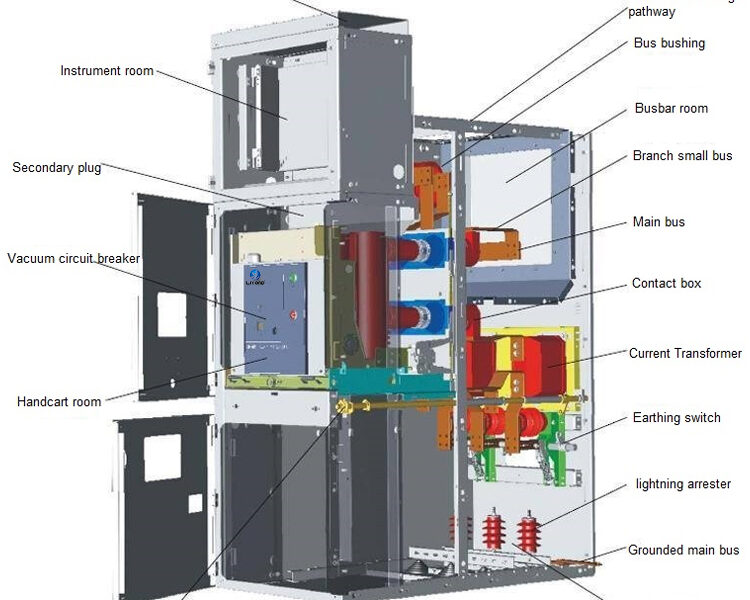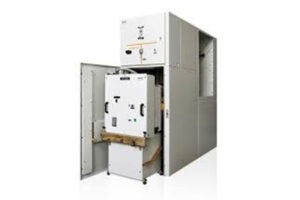
Switchgear Installation Guide
Switchgear is a crucial component of any power system, and its installation is a complex process that requires meticulous attention to detail. Proper installation ensures the reliability and safety of the system while preventing potential issues or damages.
Under normal conditions, switchgear primarily functions to switch electrical circuits on and off. However, in case of a fault, such as a short circuit, it plays a critical role in detecting and isolating the faulty section to prevent damage to the overall system.
Switchgear is categorized into indoor switchgear and outdoor switchgear, making it essential to choose a reliable manufacturer that meets operational requirements.
Switchgear Installation Process
1. Preparation for Installation
Proper planning and arrangement of materials are essential for a smooth workflow. Ensuring all required tools and equipment are available before starting the process helps minimize delays.
2. Inspection of Switchgear
Upon delivery, switchgear should be thoroughly inspected before installation, even if it has been stored properly. Any visible damage, defects, or discrepancies should be reported immediately to avoid future complications.
3. Site Preparation
The installation site must be prepared according to the project plan. This includes ensuring structural stability, confirming layout dimensions, and verifying all required connections.
4. Installation of Switchgear
This is the main step, where the switchgear is positioned and fixed in place. Special attention must be given to components such as circuit breakers, busbars, and control units to ensure proper alignment and secure installation.
5. Final Inspection
Inspection should be conducted at each stage of installation, but the initial and final inspections are the most crucial. The final inspection ensures that all components are securely installed and meet operational and safety standards.
Tools and Equipment Required
The installation process requires various tools and protective equipment, including:
- Toolbox: Contains essential hand tools.
- Portable Hand Tools: Used for fastening and adjustments.
- Portable Drilling Machine: Required for drilling holes for bolts and screws.
- Grinding Machine: Used for surface finishing and adjustments.
- Digital Multimeter: Measures voltage, current, and resistance.
- Measuring Tape: Ensures correct positioning of switchgear components.
- Safety Gear:
- Safety Shoes: Protects against potential injuries.
- Safety Helmet: Prevents head injuries during work.
- Safety Glasses: Shields the eyes from dust, sparks, and debris.
- Fluorescent Vest: Enhances worker visibility.
- Safety Gloves: Protects hands from electrical hazards and sharp edges.
- Mobile Crane: Assists in lifting and positioning heavy components.
Personnel Involved in Installation
The installation process requires a team of professionals, including:
- Project Manager
- Construction Manager
- Quality Assurance/Quality Control Engineer
- Site Engineer
Safety Measures for Switchgear Installation
In addition to safety gear, it is essential to follow certain procedures:
- Engage trained professionals for testing and operation of power tools.
- Ensure proper lighting in the work area, especially for night-time operations.
- Wear PPE (Personal Protective Equipment) when working near live circuits.
- Identify and mitigate risks related to switchgear installation in advance.
- Establish emergency response plans to handle unexpected issues effectively.
Storage conditions are also critical. Materials must be kept in dry, covered areas to prevent damage. Upon arrival at the site, all equipment should undergo an initial inspection, and any defects must be reported immediately for rectification.

Preparatory Steps Before Installation
Before installation begins, several key steps must be completed:
- Verification of Components: Ensure relays, fuses, meters, circuit breakers, and busbars match the design specifications.
- Follow the Layout Plan: Installation should be in accordance with the provided design drawings.
- Prepare the Floor: Base frames must be installed and secured in open trenches.
- Allow Adequate Clearance: Space must be maintained at the rear for maintenance access.
- Secure Busbar Connections: Busbars must be rigidly connected.
- Follow Cable Specifications: The bending radius of cables should comply with manufacturer guidelines.
- Cable Work: Ensure proper pulling, termination, and crimping of cables.
- Provide Proper Earthing: Ensure the switchgear is correctly grounded for safety.
- Adhere to Manufacturer Recommendations: Only approved materials should be used during installation.
- Seal Cable Entries and Openings: All room and floor openings must be sealed with appropriate materials.
- Ensure Proper Ventilation: Air conditioning should be installed outside the room, and no water leaks should be present.
- Battery Cable Requirements: Connecting cables between the switchboard and battery unit should be at least 4 mm².

Switchgear Installation Procedure
Step-by-Step Process
- Base Preparation: Ensure a stable base with appropriate spacing for screws and bolts.
- Positioning of Frames and Panels: Using lifting equipment, place switchgear components according to the prepared layout.
- Trench and Cover Construction: Align with the pre-planned design.
- Equipment Support Installation: Ensure proper support structures for switchgear components.
- Placement and Assembly: Position the switchgear on the concrete base and fully assemble the unit.
- Certification of Installation: Ensure that the installation meets regulatory and safety standards.
- Cable Support and Termination: Install cable supports, ends, and terminations correctly.
- Grounding and Connection Tightening: Secure all electrical connections and grounding points.
- Master Terminal Wiring: Ensure all terminal boards are wired and numbered correctly, with appropriate cartridge-type fuses.
- Relay and Timer Settings: Configure according to the manufacturer’s specifications.
- Control and Key Installation: Set up the main distribution system controls and access keys.
- Protection of Exposed Components: Cover finished metal surfaces with acrylic plastic to prevent corrosion.
This installation process applies to medium voltage switchgear, including:
- SF6 gas-insulated switchgear
- Metal-enclosed switchgear
- Metal-clad switchgear
- Pad-mounted switchgear
- Vault or subsurface switchgear
However, the installation procedures for low-voltage switchgear and high-voltage switchgear may have some variations.
By following these detailed steps and adhering to safety protocols, the installation of switchgear can be completed efficiently, ensuring long-term reliability and operational safety.
Professiona Switchgear supplier and manufacturer
- Zhejiang GONGSHUN Electrical Co.,Ltd (electricgs.com), Our company was founded in the late 1990s, specializing in the production of inflatable cabinets, SF6 inflatable cabinets, and various high and low voltage complete sets of electrical equipment. It has multiple subsidiaries under its jurisdiction, including high-voltage load switch branch, high-voltage circuit breaker branch, high-voltage fuse branch, and technology development branch.Our technical expertise, comprehensive product portfolio and long-term rich experience are helping many customers in need to solve their power problems. We’re happy to help at any time. Whether you need application product advice or technical assistance, our global service team is committed to providing you with the right support. For more technical information about medium voltage earthing switch, feel free to contact us, send an email to gongshun@electric-cn.com
- Our company specializes in producing 12KV-40.5KV series high-voltage electrical products: FZN58, FLN48, FLN36, FZRN25, FZN21, FN18, ZFN16, FN12, FN8, FN7, FN5, XRNT, XRNP, VS1, ZN28, ZW8, ZW32, JN15, GN19, GN22, GN24, GN30, CLXGN15-12, HXGN □ -12, DXG-12 (L), DFW □ -12 high-voltage cable branch box, CLXGN □ -12 (SF6) series inflatable cabinet 12KV and 35KV cable accessories, etc; CLVXP-12 indoor AC high voltage fixed switchgear, CL-SIS-12 compact solid insulated ring main unit, professional assembly Schneider SC6 (SF6) series load switchgear, ABB produced SFG (SF6) series load switchgear and other series products; Distribution and agency of high-voltage load switches and inflatable cabinets produced by Schneider Electric and ABB; Siemens produces the 3AJ1 series of indoor medium voltage vacuum circuit breakers and other related products. The company has a complete range of products and has been operating safely on domestic and international power grids for a long time, receiving unanimous praise from both new and old users. Among them, multiple products such as FZRN25, FN12, FLN36-12, XRNT-12 have been exported to various countries and regions in East Asia, South Asia, Southeast Asia, Africa, and the United States.
